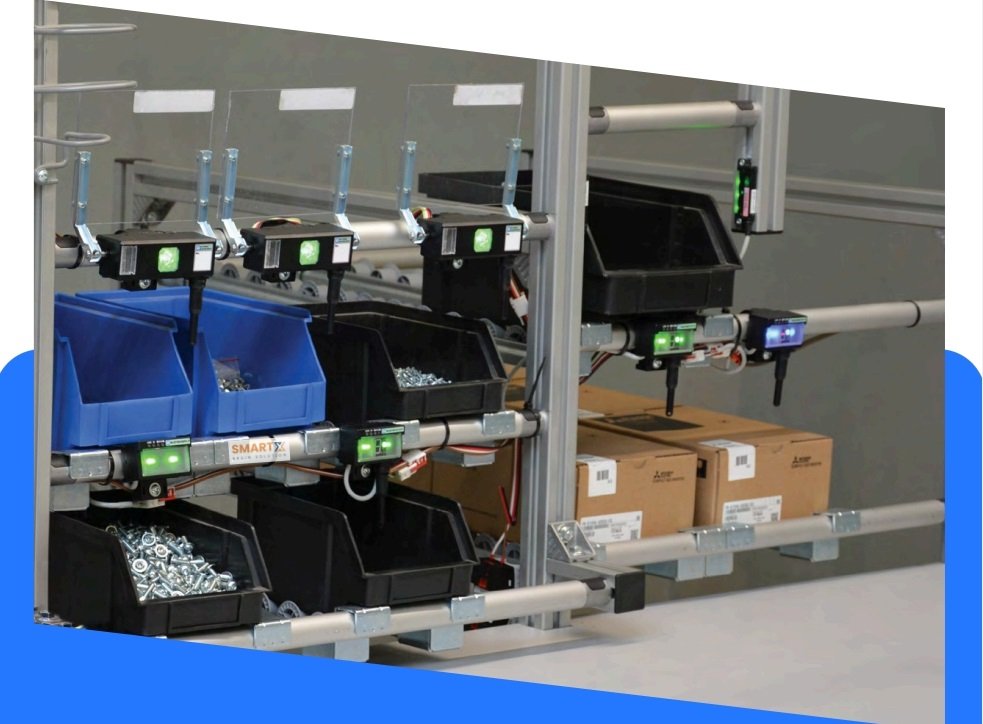Warehouse automation is evolving rapidly, and pick-to-light technology is no exception. With increasing demands for faster, more accurate order fulfillment, businesses are leveraging advanced innovations such as IoT connectivity, AI-driven insights, and real-time data analytics. These advancements are reshaping how warehouses operate, improving efficiency, and driving greater scalability.
In this blog, we explore the future trends in pick-to-light technology and how businesses can prepare for the next generation of order fulfillment solutions.

Key Trends Shaping the Future of Pick-to-Light Technology
1. IoT-Enabled Pick-to-Light Systems
The Internet of Things (IoT) is revolutionizing warehouse management by enabling seamless connectivity between devices and systems. IoT-powered pick-to-light solutions allow real-time tracking, automated inventory updates, and better system communication.
✅ What This Means for Businesses:
- Improved inventory visibility with real-time updates.
- Remote monitoring and diagnostics to minimize downtime.
- Predictive maintenance for optimized system performance.
2. AI and Machine Learning Integration
Artificial Intelligence (AI) and machine learning (ML) are making pick-to-light systems smarter. These technologies analyze historical picking data to optimize workflows, predict order trends, and reduce inefficiencies.
✅ What This Means for Businesses:
- AI-powered route optimization for faster picking.
- Automatic demand forecasting for inventory planning.
- Reduced errors through continuous learning and improvement.
3. Augmented Reality (AR) for Hands-Free Picking
AR is enhancing pick-to-light systems by providing hands-free guidance through smart glasses or head-mounted displays. Workers can see visual cues and order details directly in their field of vision, improving picking accuracy.
✅ What This Means for Businesses:
- Increased worker productivity with faster order picking.
- Hands-free operations, reducing the need for manual input.
- Enhanced training experiences for new employees.
4. Cloud-Based Pick-to-Light Solutions
Cloud technology is enabling more flexible and scalable pick-to-light deployments. Cloud-based systems provide centralized control, real-time data access, and integration with other warehouse management tools.
✅ What This Means for Businesses:
- Seamless integration with Warehouse Management Systems (WMS).
- Remote access to performance metrics and analytics.
- Scalability for multi-location warehouses and fulfillment centers.
5. Data-Driven Decision Making with Analytics
Data analytics is becoming a core component of pick-to-light technology. Warehouses can analyze picking patterns, monitor workforce efficiency, and make data-driven decisions to optimize operations.
✅ What This Means for Businesses:
- Identification of bottlenecks and inefficiencies.
- Performance tracking for continuous process improvement.
- Real-time reporting for better decision-making.
6. Sustainable and Energy-Efficient Solutions
As businesses focus on sustainability, pick-to-light systems are becoming more energy-efficient. New solutions use LED lighting with lower power consumption and eco-friendly components to reduce operational costs.
✅ What This Means for Businesses:
- Lower energy costs with optimized power usage.
- Reduced carbon footprint through sustainable technology.
- Compliance with environmental regulations and green initiatives.
Preparing for the Future of Pick-to-Light Technology
To stay ahead in the evolving logistics industry, businesses should start integrating these emerging trends into their warehouse operations. Investing in smart, scalable, and data-driven pick-to-light systems will not only improve order fulfillment but also enhance long-term competitiveness.
By embracing IoT, AI, AR, cloud-based systems, and analytics, warehouses can optimize performance, reduce operational costs, and meet increasing customer demands with greater efficiency. The future of pick-to-light technology is here—are you ready to adapt?

